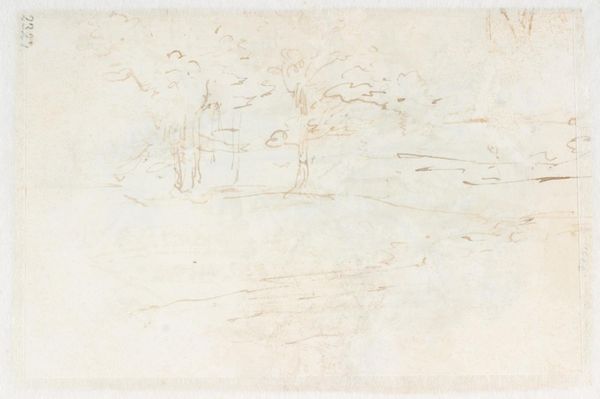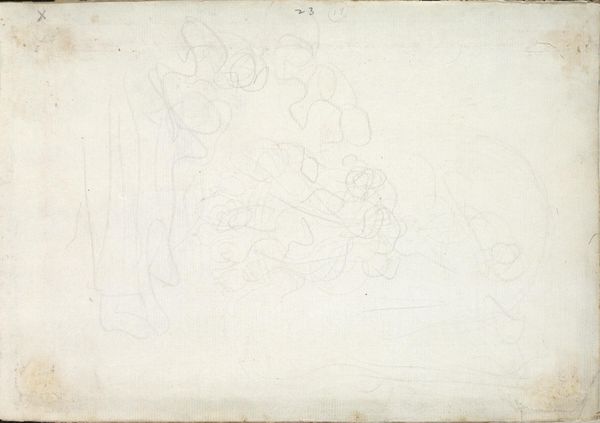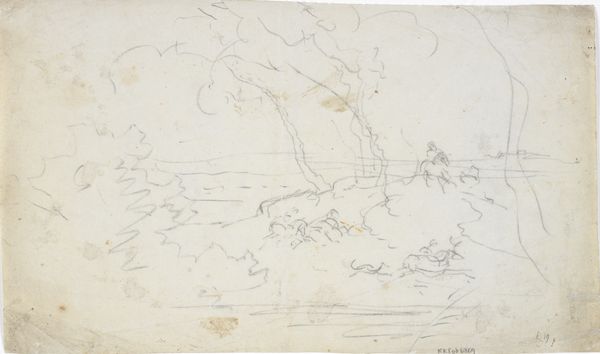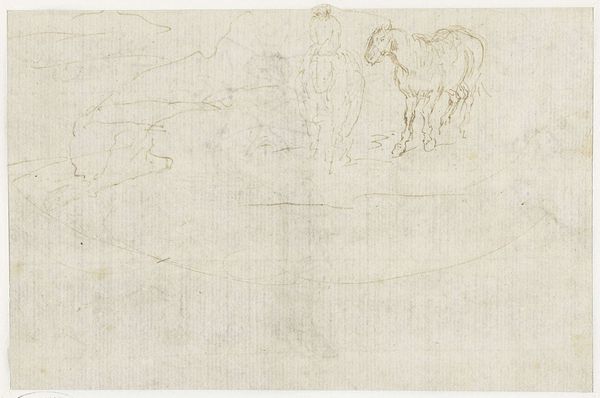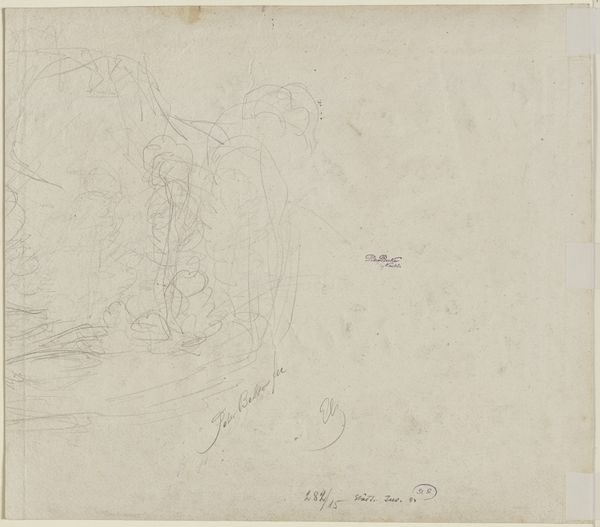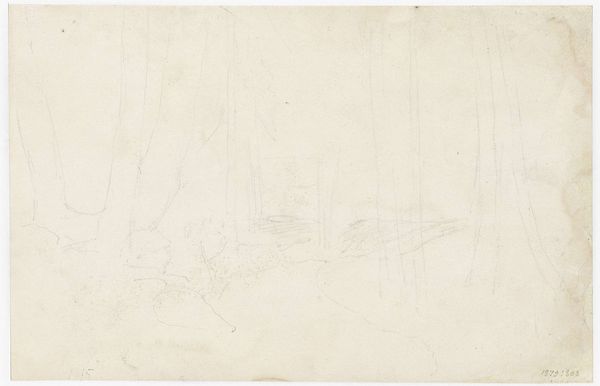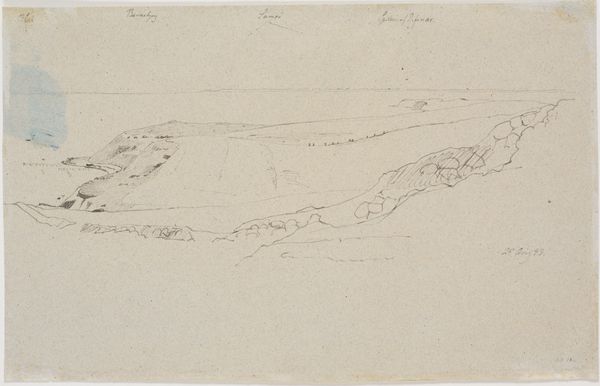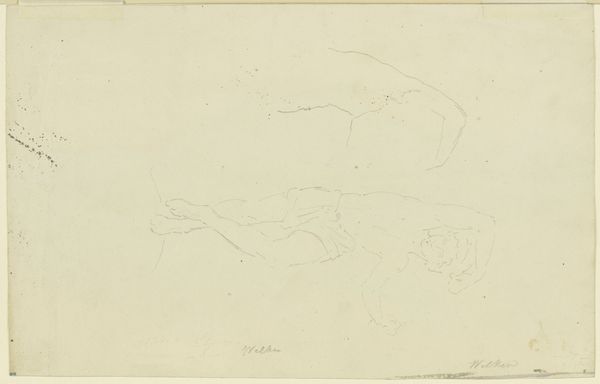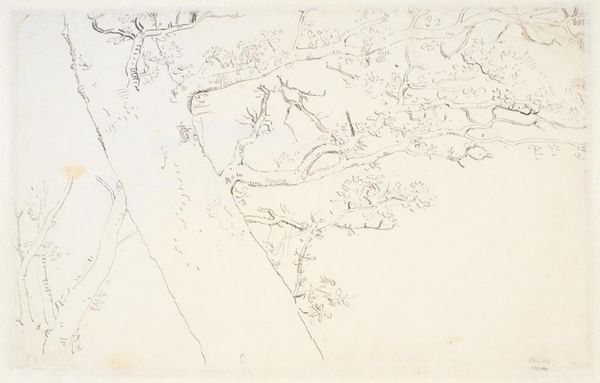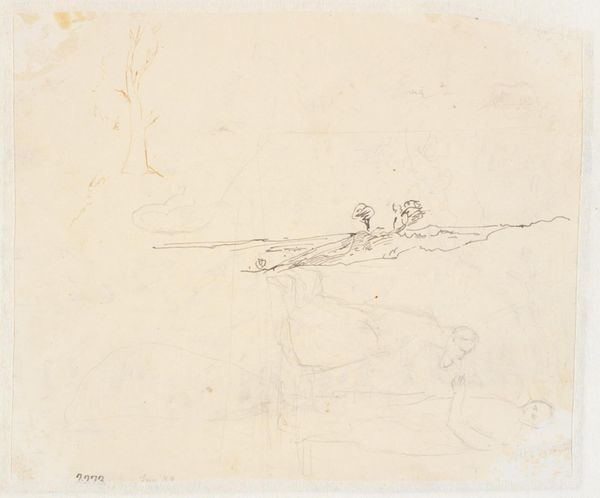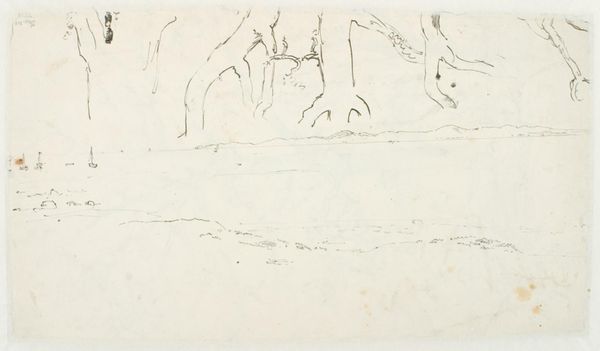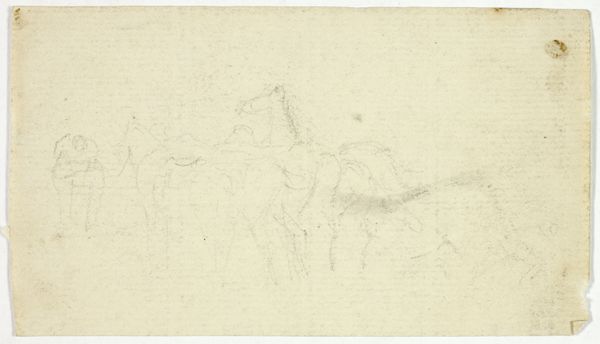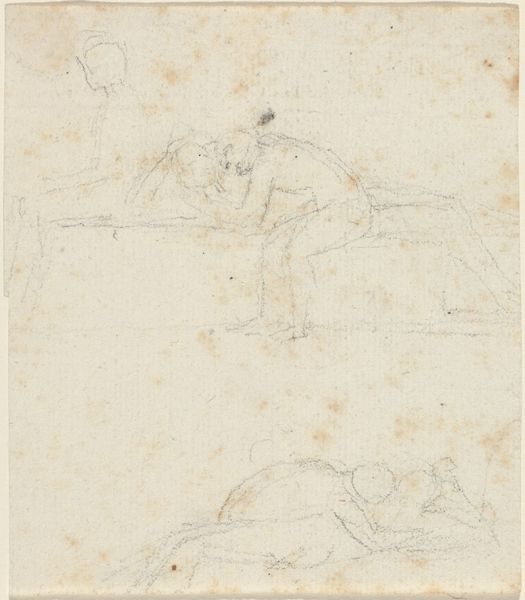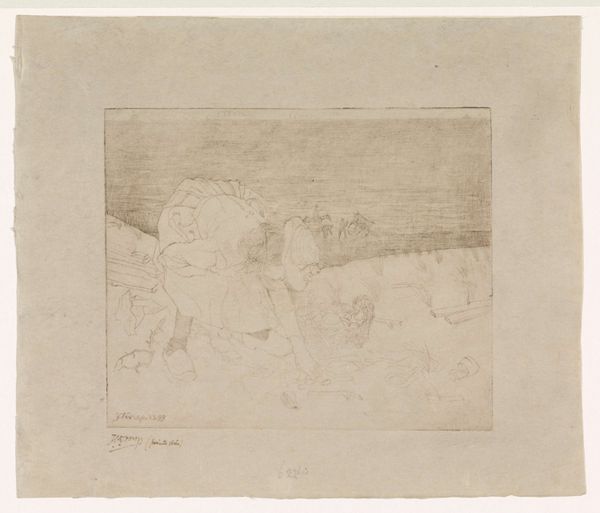
drawing, plein-air, pencil
#
drawing
#
plein-air
#
landscape
#
romanticism
#
pencil
Copyright: Public Domain: Artvee
Curator: Soothing. The gentle washes of graphite give it an ethereal quality, almost like a faded memory. Editor: And yet, look at the assuredness of the line, how deliberately placed each stroke is. We’re looking at “View of Marino,” a pencil drawing made en plein-air by Camille Corot in 1827. Curator: That "en plein-air" element is key to understanding this work within the broader artistic movements of the time, right? The burgeoning appreciation for directly engaging with nature, rather than strictly academic studio work. Editor: Precisely. There's a tangible sense of place. It evokes the feeling of sitting on that hillside, the slight breeze rustling through the trees, the distant sound of village life. A whisper of lived experience. Curator: But also Corot’s social standing. This isn't revolutionary engagement; it’s the leisure of a bourgeois artist being able to access these rural scenes, transforming them into portable sketches that reinforced a particular idealized view of the countryside. Editor: Hmm. But does that lessen the intrinsic value, the pure aesthetic joy derived from the composition? See how he subtly guides the eye toward that distant fortress? He’s using light and shadow with extraordinary deftness to conjure depth. The drawing might serve the bourgeois vision of leisure, as you put it, but is the rendering beautiful in and of itself? That's a different matter, I think. Curator: Certainly. It is technically proficient, I grant you that. And it anticipates later Impressionist concerns. We see here the kernel of an approach that values subjective impression, but remember this “subjective impression” had real implications for whose land and labor was elided. Editor: An inescapable and valid point. Corot provides beauty. Can the art provide truth, also? Perhaps we need both in this viewing. Curator: Ultimately, an art historian like me must point to these social underpinnings that gave way for particular kind of art-making possible in a place like this and for this artist. Editor: Which allows an artist to focus instead of capturing those quiet, unburdened moments of fleeting beauty before they fade into a past where all drawings return, doesn’t it?
Comments
No comments
Be the first to comment and join the conversation on the ultimate creative platform.
